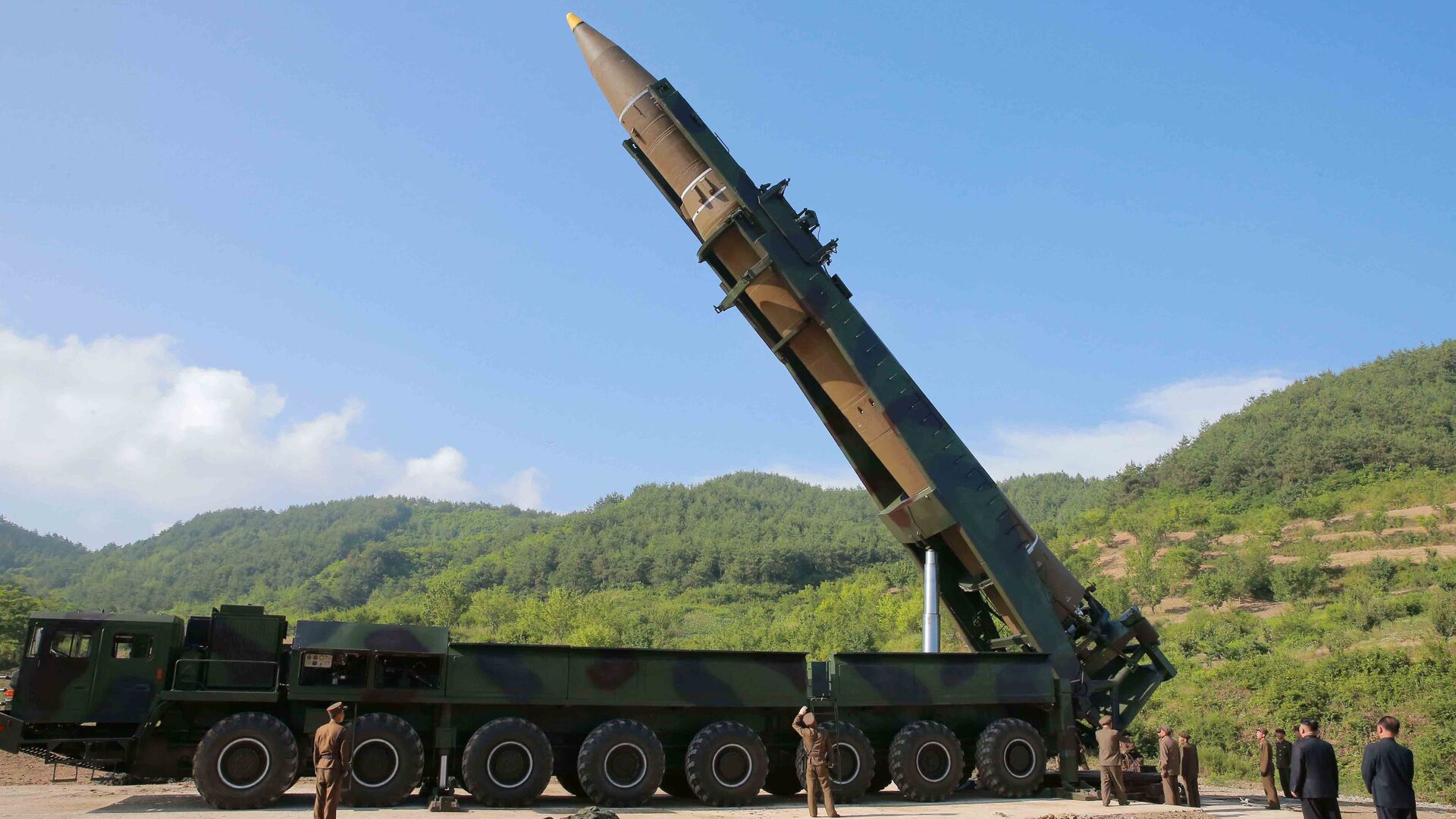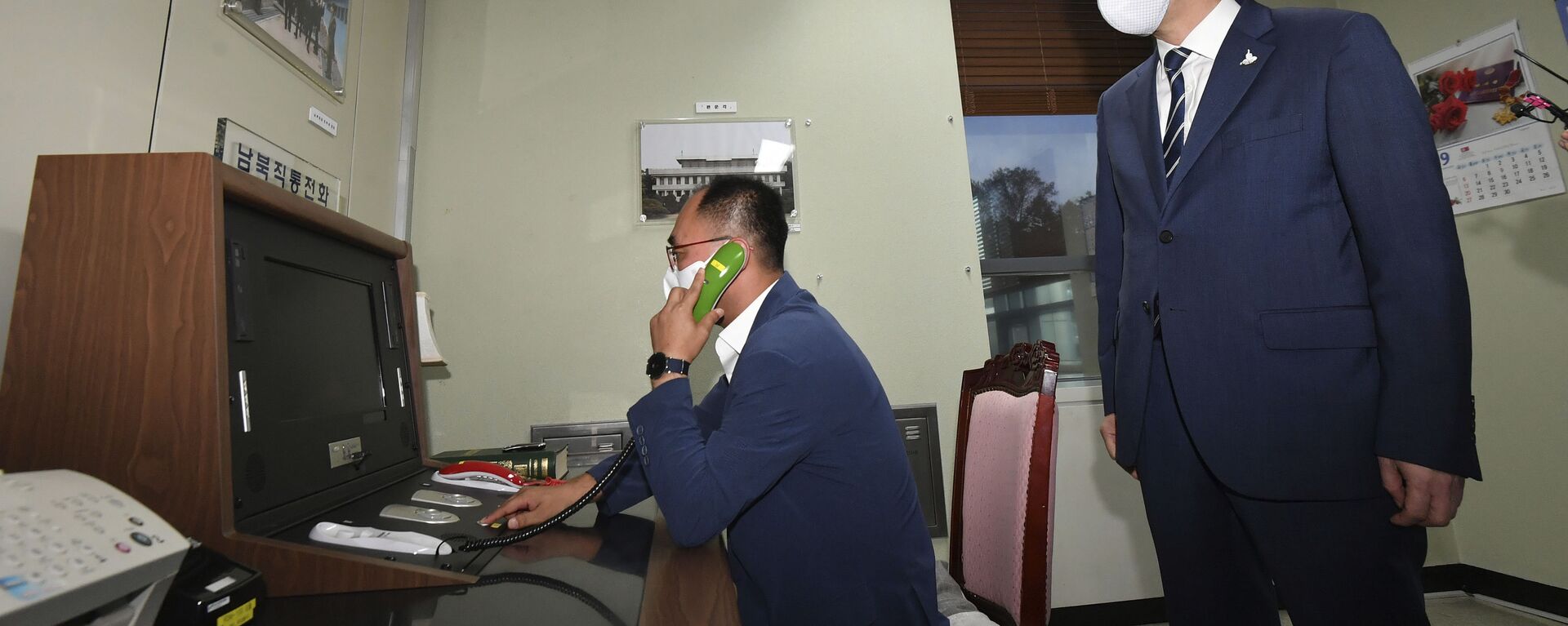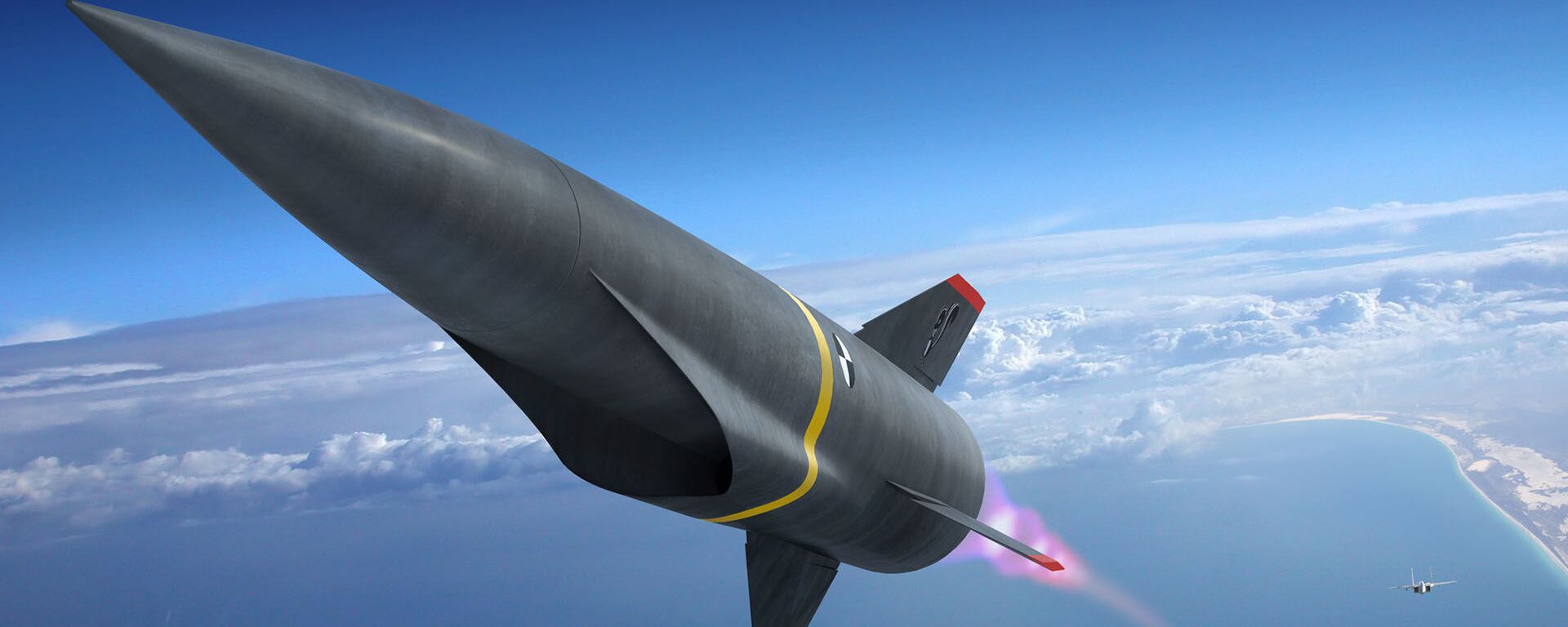After Test of Hypersonic Missile Able to Evade US Defences, DPRK Vows More Arms to Deter Aggression
17:00 GMT 30.09.2021 (Updated: 13:34 GMT 18.09.2023)

© REUTERS / KCNA
Subscribe
On Tuesday, the Democratic People’s Republic of Korea (DPRK) successfully tested what it said was a new hypersonic missile. If confirmed, the test would put Pyongyang in an exclusive small club of nations which possess or are at an advanced stage in pursuing the technology, including Russia, China, and the United States.
North Korean leader Kim Jong-un has accused Washington of becoming “more cunning” in its hostile policies against the DPRK, and assured that Pyongyang would continue to develop new weapons able to deter any “provocations.”
“In the national defence field a spur has been given to ensuring the control of the unstable military situation on the Korean Peninsula, and to developing a powerful new weapons system capable of thoroughly containing the military moves of hostile forces. One can be confident of the might of our Party and the state in powerfully opening up the way for the victory of socialism from our ultra-modern weapons, which are being developed at an extremely rapid pace,” Kim said, speaking at a session of the Supreme People’s Assembly on Wednesday. His remarks were published by the official Korean Central News Agency (KCNA) on Thursday.
Pointing to the continued arms buildup and large-scale exercises by South Korea and its US allies, Kim accused Seoul and Washington of “destroying stability and balance in the region,” and stressed that Pyongyang “bitterly denounces” these activities.
The United States, according to the North Korean leader, has left its policy toward the DPRK “utterly unchanged in posing military threats and pursuing a hostile policy…but employs more cunning ways and methods of doing so, as proven by the deeds done over the past eight months since the emergence of the new administration.”
Kim characterized Washington’s promises of ‘diplomatic engagement’ and ‘dialogue without preconditions’ as a mere “petty trick for deceiving the international community and hiding its hostile acts and an extension of the hostile policy pursued by successive US administrations.”
Accusing the United States and its “vassals” of posing a “fundamental danger” to world peace, the Korean Workers Party chairman suggested that the international situation today could be described as a “neo-Cold War” caused by Washington’s unilateralism and “prejudiced bloc-forming style foreign policy.”
He went on to suggest that inter-Korean relations were “at a crossroads of serious choices –either to advance toward reconciliation and cooperation after warming the present cooled-off ties or to suffer from national division amid a vicious cycle of confrontation.” Kim stressed that Pyongyang was prepared to restore north-south communications starting in October “as part of the efforts for realizing the expectations and desire of the entire Korean nation to see the recovery of north-south relations from the present deadlock.”
Missile Test
Kim’s comments followed in the wake of three significant weapons tests by the DPRK this month, including a new ballistic missile launched from aboard a train car, a long-range cruise missile, and a new weapon the DPRK says is a hypersonic missile.
The missile, named the Hwasong-8, was launched from Mupyong-ri area of Jagang province in the country’s northwest on Tuesday. A KCNA report on the test indicated that “national defense scientists confirmed the navigational control and stability of the missile in the active section, and also its technical specifications, including the guiding maneuverability and the gliding flight characteristics of the detached hypersonic gliding warhead.” Scientists also “confirmed the stability of the amplified missile fuel system and the actuators introduced for the first time,” according to the report.
The test came just days after the United States carried out its first successful test of a Hypersonic Air-breathing Weapon Concept (HAWC) missile developed by Raytheon and DARPA, the Pentagon’s top-secret research agency, last week.
The Japanese and South Korean militaries picked up on the North Korean missile’s launch, but categorised it as an “unidentified projectile” likely to be an ordinary ballistic missile.
The test was carried out by the Academy of Defence Science – the entity responsible for the DPRK’s arms research, from ships to tanks to missiles – a field in which Pyongyang has progressed dramatically in recent years.
Questions Related to Project's Breakneck Pace
It’s not immediately clear how North Korea was able to advance in the creation of hypersonic missile technology so quickly. Ordinarily, hypersonic weapons take many years or even decades to develop. For example, design work on Russia’s Avangard hypersonic glider, which was introduced into service in late 2019, began all the way back in the late 1980s.
North Korea's Academy of Defence Science established a national Hypersonic Rocket Research Center only in April of 2021, and a separate college at the Kim Jong-un National Defence University, known as “College No. 11,” was set up to train defence-related science and technology specialists in mid-March.
The DPRK has been known to make rapid advances in missile technology before. In late 2017, the country tested a new intercontinental ballistic missile known as the Hwasong-15, with the missile theoretically capable of striking anywhere in the continental United States. A successor, the Hwasong-16 – a two-stage, liquid fueled, road-mobile missile system with the possible capability of carrying multiple re-entry vehicles, was unveiled at a parade in October 2020.
After the emergence of the Hwasong-14 – the DPRK’s first attempt at an ultra-long range ICBM, US observers postulated that the missile technology may have come from Ukraine – once the home of some of the USSR’s most advanced weapons projects. Kiev vocally denied supplying the technology, insisting the engine tech of the Hwasong-14 was not similar to that produced by Ukraine's Yuzhmash rocket factory.
According to the KCNA, the country’s hypersonic missile is one of five priority tasks of the current five-year plan in the field of strategic arms. Set forth at the 8thParty Congress that was held in Pyongyang in January.
A State Department spokesperson told Sputnik that Washington was “aware of” the reports of a hypersonic missile test by Pyongyang, and was “working to confirm the specific nature of the recent launch event and consulting closely with our allies. We take reports of any new capability seriously.”





